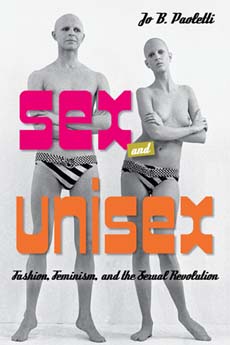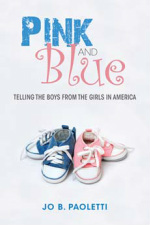If you mean "When was pink first considered a feminine color by some culture somewhere in the world", I have no idea. Color symbolism is highly culture-specific and variable. (Consider, for example, that white was the traditional color of mourning in Japan at the same time that black had the same meaning in most of Europe.) It is clear that in most of Europe and America in the 19th century and early 20th century, pastel colors were considered "youthful" and were used more often to flatter the complexion, not denote gender. Pink was considered more flattering for brown-eyed, brown-haired people and blue for blue-eyed people. (Green and yellow were preferred for red-heads, and I have anecdotal evidence that lavender was sometimes used for African-American babies, but not enough to be confident in that claim.) When pink or blue were used in gendered ways, it seemed to be a matter of fashion -- a temporary trend -- not a tradition. Nor were they used consistently the way we do today (pink=girl, blue=boy).
Between (very) roughly 1900 and around 1940, there was a movement towards more gender distinction in clothing, first for toddlers and then for babies, including more frequent use of pink and blue to signify gender. There was also quite a bit of confusion among clothing manufacturers and retailers about which was which, as they tried to settle on one rule for the entire country. (See the table from 1927 in the image gallery)
Between around 1940 and the mid-1980s, the pink=girl, blue=boy convention was nearly uniform, but not completely so. This was still variable by region in the United States. There were German Catholic areas in Nebraska which used blue for girls as late as the early 1980s, and I have seen pink clothes for boys from the deep South from the 1970s. In addition, it was not yet the very rigid use of pink we've seen recently. Pink was an option for girls, and it was quite possible to avoid it. (I seldom wore pink or pastels as a little girl in the 1950s; my mother preferred to dress me in deeper colors, especially shades of blue.) Pink was by far the most common color used for first birthday cakes, for example, and pink and blue were used together in baby announcements, receiving blankets, toys and clothing for both boys and girls.
What has changed since the 1980s? First, pink became so strongly associated with femininity, that when a boy or man wears it is is no longer "just a color", but an act of defiance or personal expression beyond the aesthetic. Second, it eventually crowded out other colors in the options for babies and little girls. Finally, pink has been adopted by manufacturers of thousands of products as a way to differentiate their wares and sell more items, especially for children.
So there it is. Before 1900, pink and blue were two of a range of pastels appropriate for babies and children, symbolic of gender to the same extent that shamrocks symbolized luck -- in a light-hearted, fanciful way, not a moral imperative. From 1900 to around 1940, their modern associations were taking shape, but were often reversed in some parts of the United States, and still not taken too seriously. From around 1940 until the mid-1980s, pink and blue had their now-familiar associations, with regional exceptions and lots of other options. Since around 1985, pink has been not only a strong symbol of femininity, but neutral and non-pink options have been gradually edged out.
Sorry this is so long. But as you can see, the question may seem simple, but the answer is not!


